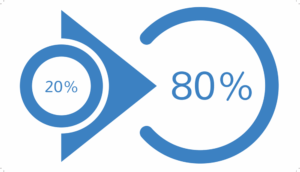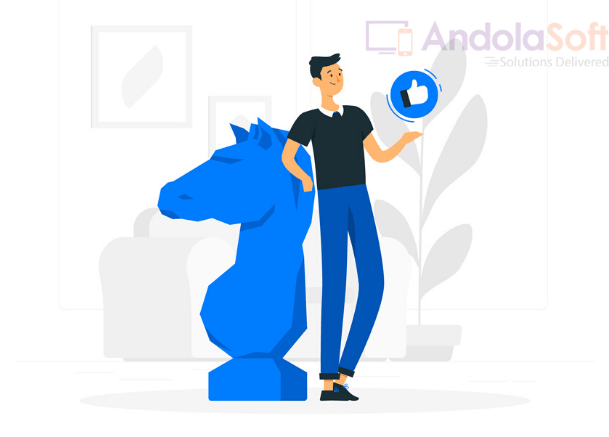Since the last few years, COVID-19 has made the most unexpected impacts worldwide. As of December, 2021, COVID-19 has affected millions of people worldwide with many deaths.
As with the New variants of Covid-19, the Omicron variant is emerging again, creating a major impact on millions of lives and to the economic sector.
As for the impact on the global business, we can’t say the industry like eCommerce is experiencing the complete fallout. The online sale has taken the hit but it is not completely down.
It’s clear that moving forward, choosing between online sales and brick-and-mortar stores won’t be the answer — instead, “offering a compelling Omni channel experience…is a requirement for survival,” says McKinsey analysts.
The drastic E-commerce growth amid movement restrictions induced by Covid-19 has increased the online Retail sales from 16% to 27.6% in 2021.
Never miss an update from us. Join 10,000+ marketers and leaders.
According to a report by UNCTAD, online retail sales have grown in many countries, with the Republic of korea holding a large number of shares at 25.9% by 2021, up from 20.8% the year before.
This pandemic has spread to over 100+ countries now. But as an eCommerce vendor, it is also time to deliver to their customer despite the circumstances.
Actually, it is very important to handle every step along the way with safety as paramount.
Despite this “post- Covid” era, the situation is constantly changing. With retail and E-commerce business has begun to observe behavioural shifts in the shopping habits , along with many new behavioural shifts observed in the shopping habits.
Online Shopping Increases By Demographic:
A report by BigCommerce has shown that in the Covid-19 various gender and age-groups have adopted E-commerce in varying degrees.
According to a survey it was observed that in the UK and US, 96% of millennials and GenZ are worried about the pandemic which has affected the economy. The widespread worry was observed that this age group differentiate their behaviours more noticeably in comparison to other generations.
Agility PR has reported that 30% of millennials has done more Online shopping during pandemic. In contrast 20% of Gen X, 24% of Gen Z and 8% of Baby boomers.
More data has shown that 24% of boomers and 34% of GenZ have seen Covid-19 has created an impact on the items they are purchasing, compared to nearly half of millennials. These effects might include the cutting back on spending, carrying certain items and spending less on the experiences.
There is also much disparity observed between genders, with 24% of men found to be online shopping in the pandemic, in comparison to 18% of women. Also, one third of men, in comparison to 25% of women, said that Covid-19 has created more impact on how much they spend on products.
Here I have drafted some safety measures that you should adopt to make your selling experience more effective.
Sanitize Every Place That You Work
For the safety measures, you need to do this at shipment centres, inventories, warehouses, and all the workspaces of your organisation where works are made out. This is the top priority for included people, especially those in the eCommerce sector, considering the far-reaching geographical capabilities of the industry.
Here are some precaution checkpoints of sanitization that you can undertake:
- Screening the warehouse personnel regularly
- Instant sanitization of the warehouse
- Minimizing the working resources and maintain the social distance
- maintain heavy caution on entry and exit points
- An emergency phone line to contact the hospital or police station, if required
- Maintain the manual register for all visitors
- Contactless delivery
By setting as an example India with1.3 billion people shut down, the World Health Organisation (WHO) said “India’s COVID fight could make or break the global war. WHO said India has a tremendous capacity to deal with the pandemic as it has experience of eradicating smallpox and polio”.
With the contactless initiative, customers can ask the delivery guy to leave their order package in a secure location, from where the end-user can pick it up.
“It can go a long way in containing the spread of COVID-19 and protects both your courier partner and the end customer.”
Winners On The E-Commerce Shift:
Big commerce has reported that month over month, the food and beverage has increased. The impact of E-commerce on emerging markets has grown to 18.8% and also shows a big growth in the downloads of mobile applications. It has allowed people to hire personal shoppers to prepare and also in some cases they deliver the goods.
The rise of E-commerce popularity was observed as many of us were quarantined at home, usinging Netflix, Disney+ and all the gaming subscribers has observed growth at an unprecedented rate in Q1 2021.
Provide Training On Sanitization
In these testing times, the biggest threat to society is perhaps, ignorance.
Ignorance, perhaps this is the biggest threat to society. It is so important that each and every single person is well informed about the basics to fight effectively.
Government officials of many countries have adopted epidemic training and awareness procedures for staying safe.
This includes;
- how to wash your hands
- how to wear a mask
- how to stay away from infected surfaces
- how to deliver using contactless delivery
Collaborate With Shipping Aggregators
The most advantageous outcome of partnering with a shipping partner is to reduce the workload of your internal team and make sure a clean, hygienic shipping process end-to-end.
There are many vendors using this workflow, so you will be able to choose an alternate courier partner without wasting any time.
Keep Customer Support Paramount
To ensure customer satisfaction and general peace amongst customers, make sure that customer support is available round the clock.
Customer service at whim can make sure that the customer and the seller are constantly in touch.
Okay. These are the safety measure for online vendors to ensure the safety of packing to deliver the goods to end-users.
But can we see this lockdown period as an opportunity to boost your eCommerce sale?
As people are willing to stay at their homes these days and they need their daily life stuff also.
So, the answer is YES!
Strategies To Boost Online Sales
It is very obvious that the consumers are spending more time on the internet as they are social distancing and IT professionals are working from home.
So, our recommendation would be to consider your online presence of the online store. This depends on the eCommerce platform you use. Various eCommerce platforms have different limitations.
Example; The core features of Magento, WordPress, are pretty much search engine friendly.
If everything is OKAY.. then revisit your marketing spend and improve the effectiveness of your virtual communications.
1. Reach Out To Your High-Value Customers
Analytica says, “20% of your customers contribute 80% of your total revenue”. Considering this you need to prioritize the high-value customers ensuring their lifetime loyalty.

Source: Squarespace
Applications like Wakeupsales, (cloud-based Salesforce Automation tool) act like the customer relationship solution and contacting platform all in one.
Through this, your marketing staff can stay in touch with the prioritized high-value customers remotely.
So, you can send personalized recommendations that include links to purchase online.
2. Adapt Your Marketing Messaging
During this sensitive period, you also need to rethink your marketing strategy.
However, brands should be cautious of pivoting too far away from their core brand messaging, or worse yet, coming off as opportunistic.
Below are some examples of brands that made simple adjustments to their messaging to “read the cultural room” while remaining authentic.
3. Create “Social Experiences” On Social Media
Staying home means surfing the internet and social media. So the brand needs to get creative about how they leverage their social media presence.
The brand can create problem-solving social media campaigns to gain more reach of your brand or product.
Also, consider the campaign must make aware of your brand and how your brand gets to solve the daily life requirement.
This helps to acquire loyal customers.
4. Offer Free Shipping Or Local Pickup And Delivery
Shipping cost is always a barrier for online users. So if possible, you can consider offering free shipping.
There is another option available “curbside pickup”.
This term of delivery is actually, a customer ordered a product online and can pick it up fro your local store.
It decreases the hassle of the delivery process. And for customers, it also cut the waiting time.
Still, you need to integrate the whole setup on your eCommerce website. This is not a big development process. You can integrate this delivery set up by hiring an eCommerce developer remotely.
5. Extend Your Return And Exchange Policy
“Extending your return and exchange policy in acknowledgment of the current climate could alleviate buyer doubt and incentivize online sales.”
So, changing the return policy can bring some sighs to your customers. As on the lockdown period, the delivery time and pick up time could be delayed. So, extending the return period could help to gain some loyal customers too.
6. Use Retargeting Ads To Reach Your Customers
Paid advertising can help you to reach such people which you cannot go with organic campaigns. And doing it smartly would help you to regain such visitors who were at your store before.
Technically, we called this a Retargeting campaign.
I’ve worked with the team at Andolasoft on multiple websites. They are professional, responsive, & easy to work with. I’ve had great experiences & would recommend their services to anyone.
Ruthie Miller, Sr. Mktg. Specialist
Salesforce, Houston, Texas
LEARN MORE
Through it, your ads or product can be displayed to those users who visited your website recently.
The various ads managers like Facebook, Google, etc have the algorithm to perform such methods.
Conclusion:
Developing and delivering the fruitful content display will always have the high-end stuff for your eCommerce website too.
So, before adopting all these methods and strategies, you need to ‘consider your existing website performance and capabilities.
When we come to the point of COVID-19, there is no ETA on when this crisis is going to end. But it is heartwarming to see all people coming together to fight this pandemic.
As the new Covid Variant, Omicron is growing gradually, therefore it is important to take all the necessary steps and grow your business gradually. Develop your E-commerce application now with Andolasoft.
Our experts, App developers, will guide you with this path, by developing your desired eCommerce Application.
We at Andolasoft also urged the merchant to follow the guideline and secure every touchpoint.
Is your eCommerce site fully integrated to fight this situation? Let’s Discuss.













